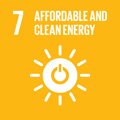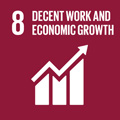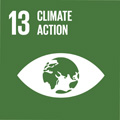- Docente: Alessandra Luati
- Credits: 6
- SSD: SECS-S/01
- Language: English
- Teaching Mode: In-person learning (entirely or partially)
- Campus: Bologna
- Corso: First cycle degree programme (L) in Statistical Sciences (cod. 8873)
Learning outcomes
By the end of the course the student should know the fundamental theory of time series analysis. In particular the student should be able: - to analyse a time series in the time and in the frequency domain - to identify the stochastic process that has generated a time series based on the autocorrelation structure - to estimate and make inference on the parameters of a linear model for a stationary time series - to estimate time series components such as trend and seasonality by means of non parametric and parametric methods - to recognise the most important models for time series data
Course contents
The course is made of the following arguments. Linear models for time series data: linear processes, autoregressive unintegrated moving average processes (ARIMA) , seasonal processes. Identification, estimation and forecasting from ARIMA models. Time series decomposition. Time and frequency domain analysis.
Readings/Bibliography
Textbooks:
Brockwell P.J. and Davis R.A. (2002), Introduction to Time Series and Forecasting, Springer
Further readings:
Brockwell P.J. and Davis R.A. (1991). Time Series: Theory and Methods. Springer
Teaching methods
Lectures, class exercises, laboratory.
Assessment methods
Every week during the course, students receive an homework which consists of theoretical questions, exercises and applications to be done with the computer. Students can decide either to do their weekly homeworks and give them to the teacher or to exercise when they like. In the former case, students have direct access to an oral exam which is a discussion of the homweork themselves (with the aim of verifying if they have really done and understood the exercises). In the latter case, students will be required to give a written examination, which essentially is a synthesis of the homework, i.e. it is made by theoretical questions, exercises or proofs and comments to a code. The written exam will be contextually discussed in an oral exam. The final mark will be assigned based on the level of preparation and consciousness of the student.
Teaching tools
Textbook, notes and papers that can be found on the institutional teacher web-site and in Virtuale.
Office hours
See the website of Alessandra Luati
SDGs




This teaching activity contributes to the achievement of the Sustainable Development Goals of the UN 2030 Agenda.
